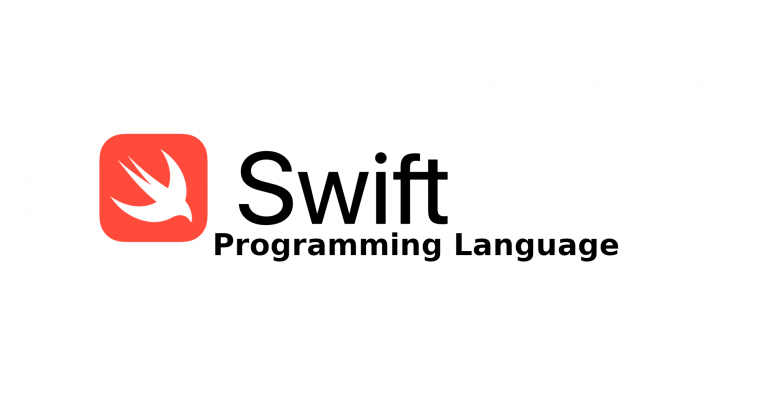
Swift is a Programming Language Developed by Apple . It is preferred language endorsed by Apple to use in it’s ecosystem. Swift is one major way to create Apps for iOS platform too. Swift is multi-platform meaning that you can run Swift programs on macOS, Linux, Windows, iOS, Android and BSDs. It is high level language and the language is not an obstacle to the logic of the program. It is one of fastest growing language, so there are many job opportunities available too. Swift language is Open Source licensed under permissive Apache License and the development takes place in Github .It is guided by thousands of experienced developers from all parts of the world.
Why Swift was created ?
Before Swift, the choice of language for Apple ecosystem was Objective-C . It was alternative to C++ created by Apple . It was OOP language with easy C interop . But, during course of time, it felt old, it did not have any modern features that could boost productivity and adhere the challenges of today’s requirements. That is the main reason Swift Programming language was created. Now, Apple endorses Swift for use in its ecosystem. It also runs in Linux and Windows. Many Developers use Linux, so lack of Linux support was also a deal breaker for many.
Underneath the Swift – LLVM
Underneath the Swift Programming language is the Swiftest Compiler currently in existence – LLVM. LLVM was also Developed by Swift’s Author Chris Lattner. Actually, Apple hired LLVM creator Chris Lattner to develop Swift. LLVM currently is compiler back-end which powers clang which is prominent C/C++ compiler used to compile Chrome/Firefox and many other popular programs. It is also used by Rust – New Safe Systems Programming Language. Also LLVM is used by many other good projects, thus receiving many patches for speed of compilation, creation of efficient executable binaries, etc. Swift uses this Swiftest Compiler to produce natively compiled fastest, safest executable binaries. Chris Lattner also made many optimizations in LLVM to make Swift still significantly more faster. Another advantage of LLVM is that it has many OS and architecture targets. It makes Swift to run on everything supported by LLVM .
Why Does Linux Support Matter
Swift supports Linux in addition to macOS and Windows. Linux support is necessary because a majority of developers and students who write code tend to use GNU Linux OS. It is gaining good user-base in Linux too due to its programming features. You can also develop for macOS on your GNU Linux system thanks to Swift’s robust support for Linux platform. You can use any Linux distribution or BSDs to develop for Swift because LLVM is supported everywhere .
SwiftUI
SwiftUI is an innovative, exceptionally simple way to build user interfaces across all Apple platforms with the power of Swift. Build user interfaces for any Apple device using just one set of tools and APIs. With a declarative Swift syntax that’s easy to read and natural to write, SwiftUI works seamlessly with new Xcode design tools to keep your code and design perfectly in sync. Automatic support for Dynamic Type, Dark Mode, localization, and accessibility means your first line of SwiftUI code is already the most powerful UI code you’ve ever written.
SwiftUI was landmark when it comes to UI creation. It supports ‘Hot Reload’ very well. Hot Reload is feature which lets you to preview UI changes as you type and reload. It boosts the developer’s productivity by saving a lot of time. Even Android Apps does not successfully support Hot Reloading (In Android Kotlin’s case, it is called Instant Run which is very slow compared to SwiftUI). Unlike many UI frameworks of other programming languages, Defining UI is really very simple in SwiftUI. If you want to convert your prototype to product quickly, SwiftUI is quickest possible way to achieve it in time.
As a C replacement
Swift is High level language, still it compiles to natively compiled executable. Because it is powered by LLVM which is also used by efficient popular C compiler clang, Swift produces very fastest code which is next in speed to metal. Swift can also call C code from Swift directly without necessity of C FFI thanks to LLVM. That also means that you can use plenty of libraries which are written in C language. Swift is not a dynamic language that needs an ecosystem of C packages to supplement performance while at the same time being difficult to integrate with C but if you wanted to use C, Swift does not stand as obstacle .
Swift System
macOS is largely created from source code of FreeBSD and Darwin. It’s almost written in C and C++. So, interfaces to OS was also provided via C system interface. As a result of this, you needed to import C interfaces in your program to talk to your OS. But now, Apple has created Swift System for Swift Programming language which lets you directly talk to your OS in Swift programming language itself. It doesn’t need C code to be imported. Being C free, you can use Swift constructs and features and that also means that your language will be legacy-free and is memory-safe.
Programming features of Swift
Swift is Functional Programming Language. It has Closure support, String support, Access control, Optionals and chaining, Value types, Protocol-oriented programming, Plenty of Libraries, Fastest and memory efficient runtime and development , Better Memory management, Good Debugging and other elements.
Swift is very cool language
Swift is Open Source which runs on almost all platforms. It is fast, safe, efficient and low energy consuming. You can create iOS, macOS, hybrid(both iOS and macOS), watchOS (Apple Watch), tvOS (Apple TV) apps with it. You can create back-end server in it . You can use Swift for Systems Programming too. Totally, Swift is very cool language . You can expect Swift to dominate and influence the Programming Sphere in future on most modern platforms.



